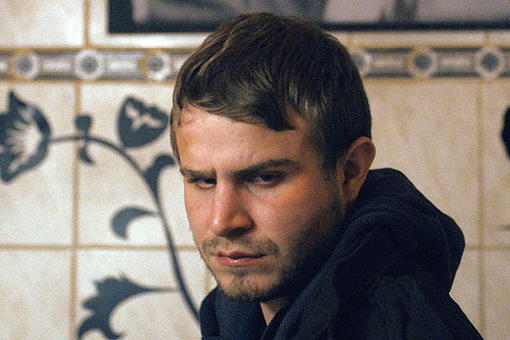Sign up for the
TSL Newsletter
and get $50 off Final Draft 12
By Meredith Alloway · November 10, 2012

When a group of young filmmakers emerges on the scene, it’s exciting. Keep your radar close on the three boys of Borderline Films. Sean Durkin, Antonio Campos and Josh Mond comprise the up and coming Production Company. They’ve already brought us festival favorites Afterschool in 2008 and Martha Marcy May Marlene in 2011. They have a knack for illuminating young talent (Ezra Miller in Afterschool and Elizabeth Olsen in Martha) and Brady Corbet in Simon Killer is no exception. Their films are raw, fearless and an exploration in the power of the camera.
Simon Killer finds its subject in Simon, (Brady Corbet), a recent college grad who studied “Neuroscience, specifically the relationship between the eye and the brain.” He’s traveled to Paris, France to find solace after a bad break up with his girlfriend of five years. Apparently, she cheated on him. So from the beginning, we’re on Simon’s side.
He spends his days wandering around the city. Like any other newly single, bored and sexually frustrated young kid, he’s looking for sex. But he’s not too smooth with the ladies. His flirting tools aren’t sharp and his French is lacking.
One afternoon, after downing a beer alone in a bar, he finds himself led into a girls club. Before he knows it, he’s forking over his credit card to a slender, sweet employee. Victoria (Mati Diop) seduces him for money but assures him that he’s “handsome” and “she’d actually like it with him.” She gives Simon her number and urges him to call her.
He does. Of course. Their “business transactions” soon become ritual, but discontent is growing in Simon. He Skypes with his mom while slicing an orange, in perhaps the best scene in the film, and groans in boyish frustration. His mother urges, “Look at me Simon! Can you look at me?” We begin to feel the same. It’s as if we can’t really see Simon or what exactly he’s thinking.
The story twists and turns as we follow Simon down a slow path of destruction. The more he pretends, the better he gets at it. He manages to win Victoria, but it’s a manipulative relationship. He eventually gets her to blackmail one of her rich clients, and he begins seeing another French girl. It’s uncomfortable to see our protagonist fall victim to his own devices. It’s disappointing, because he was, (in essence) our hero—we were on his side. But it’s also familiar. We’ve all stepped our toes over the line at some point, just to see if we could.
Telling a story about the disintegration of your protagonist isn’t easy. Aronofsky comes to mind with his films consistently chronicling their main subjects’ descent into madness. What keeps us watching? That’s the question. Why do we want to watch a person be destroyed, whether from external sources, or from something within them, or both?
Thankfully Antonio Campos, who wrote and directed Simon Killer, finds a way to keep his film afloat despite this discomfort. It’s much more of a clinical observation that a story that’s meant to pull at our heart strings.
At the Q&A after the film’s AFI festival premiere, he spoke about the films he made in high school. “I interviewed kids about their parents. They could talk to their imaginary parents, say what they wanted to say, and I wouldn’t show their face. They’d be decapitated, or I’d film them from behind.” Campos utilizes this frequently in the Simon Killer. During a scene where Simon and Victoria are celebrating, they dance in subtle victory. Instead of watching their faces, the camera focuses on their torsos. We’re forced to recognize their hips, their genitals; the elements that perhaps drive the relationship in the first place. Campos says, “You can get a lot out of an actor by not using a traditional close up. It creates mystery for the audience.”
We may see more of the back of Simon’s hooded head or Victoria’s curvaceous behind than their faces. It does help foster that elusiveness we initially recognize in Simon. It makes him unpredictable, volatile and eventually villainous.
Unfortunately, these precious shots, as creative conceptually as they are, are often minutes too long. This makes the pacing of this film feel tossed-around, and in turn, muddies the film. It’s obvious that there is still much experimentation happening between the filmmakers, the camera and the cast. Which, at this point in Campos’ career, isn’t necessarily a bad thing. It just means the film’s critical and audience reception may suffer.
The film is currently set for an April 2013 release with IFC Films.